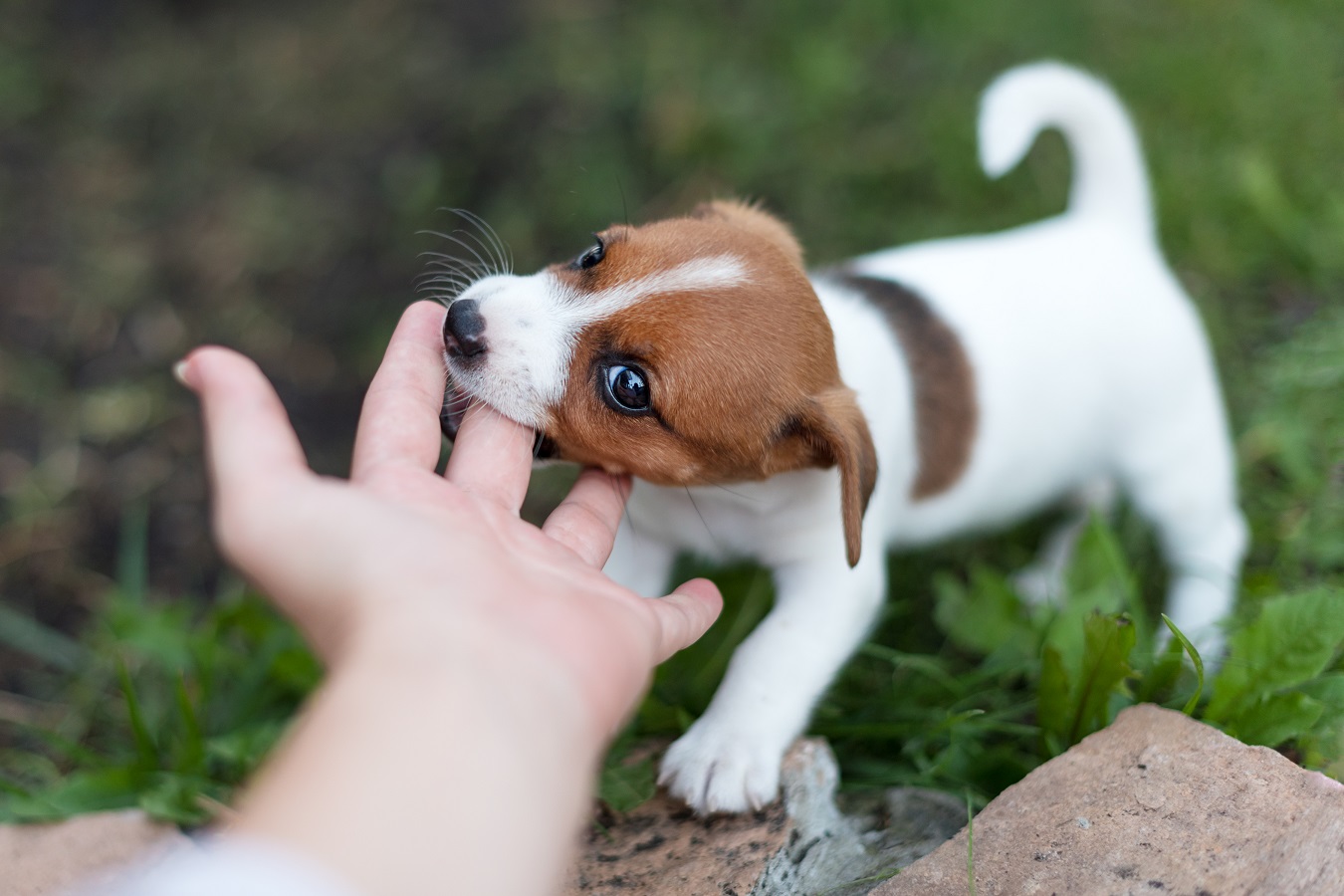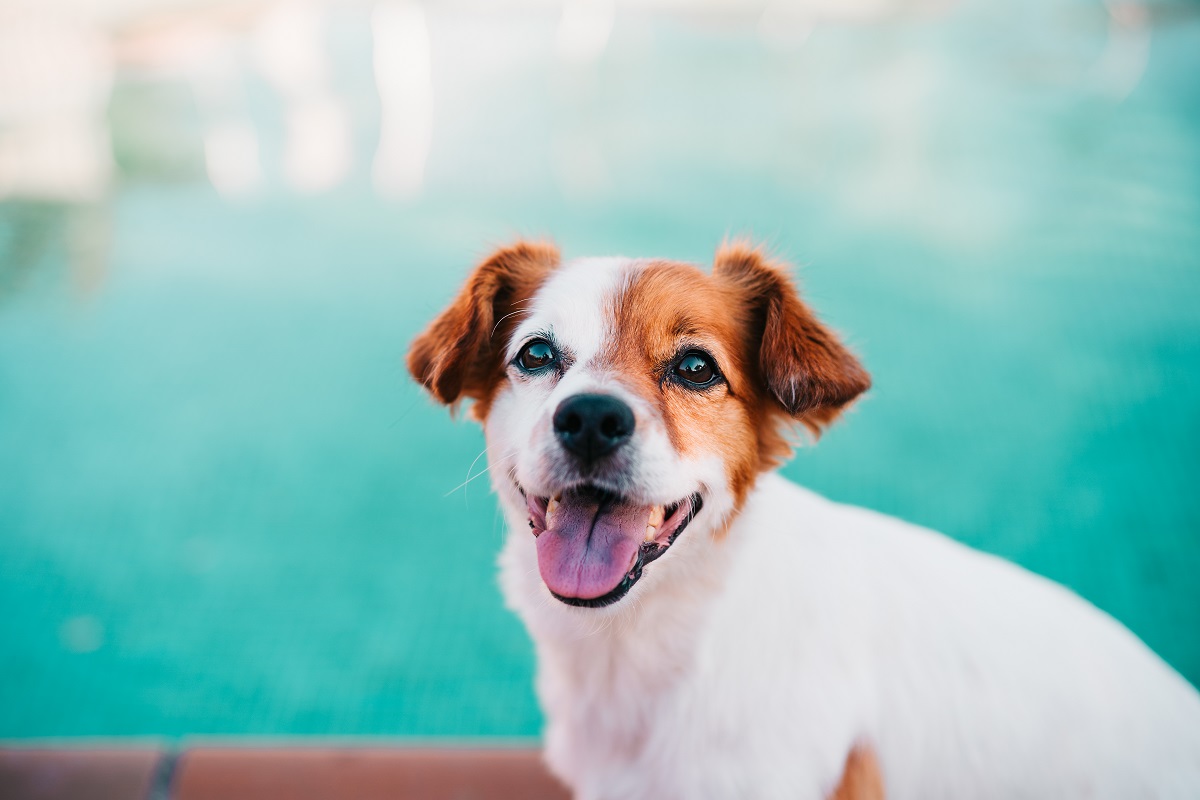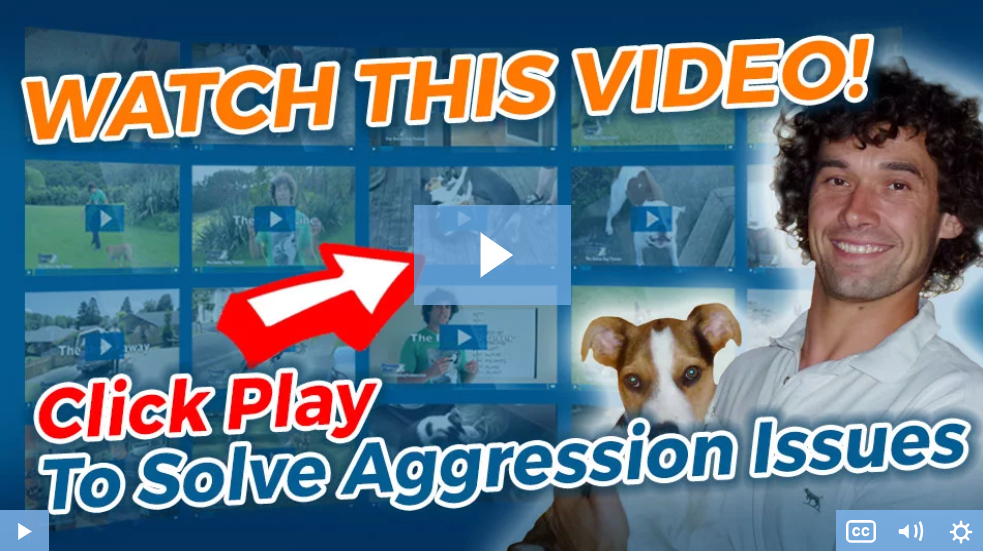Is your dog aggressive towards one child? If it is, you’re dealing with one of every pet’s owner’s worst nightmares.
While dogs can be an incredible addition to your family, there’s no denying that an aggressive or fearful dog is a major risk, especially around children.
By and large, adults are predictable. Children are anything but. They move erratically, do unexpected things, and are prone to making loud, sudden noises.
None of which is going to make an already nervy dog feel any calmer.
Add in the fact that kids are super interested in dogs and don’t necessarily understand that tail pulling or ear flicking are bad ideas. And you’re looking at a time bomb waiting to happen.
Ultimately, children don’t instinctively know how to behave around animals. And dogs don’t instinctively know how to behave around children.
So teaching both sides how to live alongside each other safely needs to be your number one priority.
However, despite these scary facts, aggression in your dog CAN be greatly reduced by first teaching your dog how to be calm and in control of their emotions.
And this is why before you do anything else, I’d highly recommend taking the time to check out The Dog Calming Code from Dan Abdelnoor over at The Online Dog Trainer. (see video below)
Watch the video, implement the training Dan recommends, and you should see a huge reduction in your dog’s aggressive tendencies in any situation that usually triggers it.
Here’s the link to take a look: Click Here To Discover How To Finally Stop Your Dogs Dangerous, Scary Aggressive Behavior… Even If You’ve Tried & Failed Before!
(video will open in a new window)
Signs of Aggression in Dogs
“Aggression” is a banner term that can be used to describe a huge list of behaviors, some of them mild, some of them anything but.
Not all displays of aggression lead to an actual attack. However, this isn’t something you can guarantee or take for granted.
If you want to avoid a minor show of aggression escalating into a physical attack. You need to be able to recognize the early warning signs and take preemptive action.
Typically, aggression will progress along the following lines:
- A still, rigid posture
- A low-pitched guttural bark
- Chasing or lunging at a target, stopping short of actual contact
- Light mouthing
- Punching the target with their muzzle
- Growling in a threatening way
- Curling the lip to display the teeth
- Snarling
- A nip that’s hard enough to be felt, but not so hard as to break the skin
- A quick bite that has enough force to break the skin
- A forceful bite that leaves a bruise
- Bite that leaves puncture wounds
- Rapid, forceful bites delivered in quick succession
- A sustained, holding bite accompanied by shaking
Although dogs don’t follow the same sequence on each occasion, it’s very rare for a dog to suddenly bite without displaying any of the prior ‘warning’ signs of aggression.
Is the Child to Blame?
No kid asks to be bitten, and no child deserves to be bitten.
The problem is, some kids don’t have a firm grasp on action = consequence.
Whether they provoke a dog knowingly or aggravate it unwittingly, they’re unlikely to realize the possible consequences of their actions.
They might think dogs like being dressed up in sunglasses and hats, having their tails pulled or the ears flicked.
They don’t know that approaching their usually friendly pet when they’re eating might not be a good idea.
And they certainly don’t have a clue that trying to pull a toy from their mouth is going to land them in trouble.
Basically, kids don’t naturally know how to behave around dogs. Some can be deliberately cruel. But mostly, they just don’t realize when their actions might aggravate or even hurt a dog.
And they certainly don’t recognize when a dog gives them a warning sign.
If you have a kid AND a dog, you can’t get away with training just the one. Once your child reaches about 18 months old, start teaching them the basics about how to behave around animals. Some of the things to remember include:
- Never play or interact with a dog if an adult isn’t present
- Do not tease, punish or play with a dog roughly
- Don’t touch unfamiliar dogs on the head
- Never touch unfamiliar dogs without first asking permission
- Avoiding shouting or making sudden noises around a dog
- Don’t wave your hands too close to their head
- If a dog is jumping around or acting boisterously, avoid playing nearby
- Steer away from dogs that are eating, sleeping, or nursing
- If a dog moves away, don’t pursue them
- Don’t touch or approach a dog showing any signs of fear or aggression
Remember, never leave a child unsupervised around a dog. Even dogs with no history of aggression can suddenly snap. Play it safe and monitor interactions each and every time.

So How Do I Stop My Dog from Being Aggressive Towards One Child
If your dog is showing any signs of aggression. It’s very easy to start thinking of their behavior in human terms.
If your dog is aggressive towards a child, they must hate them, right? And what kind of dog hates a child?
None. Hate is a complex, human-specific emotion that dogs don’t ‘do’. Whatever they’re feeling, trust me, they don’t ‘hate’ your child.
Aggressive behavior like growling, snarling, lunging, and biting doesn’t stem from hate. Usually, it arises from fear, pain, or learned behavior.
Maybe your dog had a bad experience as a puppy. Maybe they’re a rescue dog with a history of abuse. Or maybe they’ve never been socialized in how to behave around children.
Whatever the reason, it’s down to you to figure it out and try to understand what could be making them aggressive towards your child.
Take stock. Consider…
- Does your dog ‘resource guard’ their food or toys?
- Does the child use some kind of medical aid (a wheelchair, a walker, etc.) that might be frightening to a dog?
- Has your child ever acted, either intentionally or not, in an aggravating or provoking way around the dog?
- Have there been any changes in the household recently (have you moved, welcomed a new baby, a new pet, etc.)?
Once you have an understanding of what could be motivating your dog’s behavior, you should find it easier to move forward in a constructive way with some of the following techniques.
Get Them Checked Out By a Vet
If your dog’s aggression seems to have come out of the blue, get them checked out by a vet.
Certain medical conditions such as a thyroid imbalance, adrenal or cognitive dysfunction, sensory problems, and orthopedic complaints can result in mood changes and aggression, especially in older dogs.
Before you embark on any further measures, be sure to rule out a medical cause. If a health problem is identified, you’ll need to work closely with your vet as you tackle the overall problem.
Make Your Child the Good Cop
If your dog reserves their aggression for one member of the family in particular. That person needs to work on raising their status in the dog’s eyes.
If the aggression is very mild and if your child is old enough to conduct themselves appropriately. Have them take control of giving your dog all the things they value the most.
As dogs are guided by their bellies, let your child be the one to give them their meals and doll out treats at a safe distance.
The aim is to encourage your dog to associate your child with good things. If your child has ever inadvertently done anything to scare or hurt your dog in the past. Replacing those old, negative associations with new, positive ones can be hugely helpful.
Ensure that you stay close by at all times to supervise, and remind your child to remain calm and controlled during any interaction. Any sudden movements or loud noises could waylay the progress.

Classical Conditioning
Classical conditioning can be a great tool in developing a better relationship between your child and dog. It works by creating positive associations about the child in your dog’s mind.
Whenever your child comes near, reward your dog with their favorite treat. It helps if you reserve this particular treat solely for the training.
Over time, your dog will start associating the child with something tasty coming their way. After a while, let your child be the one to doll out the treats whenever the dog approaches them.
Remember to always keep the child’s safety paramount. And only let them interact or give your dog treats when they’re showing no signs of fear or aggression.
Keeping your dog in a calm, focused mood throughout the conditioning process is one of the keys to its success.
This is where The Dog Calming Code can make a big difference to your dog’s mood and aptitude for training. Like most things, the more you practice, the better – try implementing the training into your daily routine for the best results.
Desensitization
Desensitization is a popular technique used in dog training that works to reduce emotional responsiveness to stimulus via repeated exposure.
The process needs to be worked on gradually in a methodical, step-by-step way while keeping the focus on your child’s safety.
If you don’t feel confident in your ability to recognize the warning signs of aggression or fear (excessive lip licking, trembling, exaggerated yawning, crouching, flattened ears, tucked tail barking, snarling, growling, or snapping), don’t attempt the process without the aid of an animal trainer or behavioralist.
Start when your child is at a safe enough distance not to trigger an emotional response from your dog. Run through a series of basic commands like ‘sit,’ ‘down,’ and ‘shake’ with the dog, rewarding their efforts with a high-value treat. Keep practicing the exercise daily.
After a while, start to very gradually reduce the distance between the dog and child. Be very careful to watch for any subtle signs of fear or aggression that could potentially escalate.
If your dog starts to display any signs of discomfort, dial things back by increasing their distance from the child.
Once your dog is calm and accustomed to their presence. Let your child take control of issuing some of the commands.
Desensitization is by no means an overnight process. It takes time.
And trying to rush your dog towards an end goal doesn’t work.
What does work is a slow, steady pace and incorporating relaxing and settling commands to keep your dog calm and focused.
To get you started, I’d highly recommend taking a look at The Dog Calming Code from Dan Abdelnoor.
Watch the video, implement the training, and you’ll see a dramatic difference to your dog’s calmness and responsiveness.
(video will open in a new window)
Consult a Professional Behavior Expert
Aggression is a serious problem. If it’s not tackled promptly and properly, the consequences for both your dog and your child can be devastating.
Even experienced dog owners may struggle to address the problem alone. Although training can vastly improve the situation, you need to be confident and sure in what you’re doing.
Done the wrong way, training can make an already bad situation even worse.
Don’t feel this is something you need to tackle alone. An experienced professional can help develop a customized action plan that takes into account your unique situation. They can guide you as to what training techniques are going to be the most appropriate, and help ensure you implement them in the right way.
Final Thoughts
Aggression, even in its mildest forms, is something no dog owner can afford to take lightly. This goes double if that aggression is aimed towards a child.
Ultimately, not all dogs behave like Lassie, and not all children behave like Timmy. We have a duty to make sure our children are taught how to act around animals. Equally, we need to protect our kids by training and socializing our dogs to cope with their unpredictable natures.
If your dog is displaying any sign of undesirable behavior around your child, take action now.
And remember, this isn’t always something you can tackle alone. Consulting a qualified professional before the habits become ingrained can make a vital difference to your dog’s chances of success.

